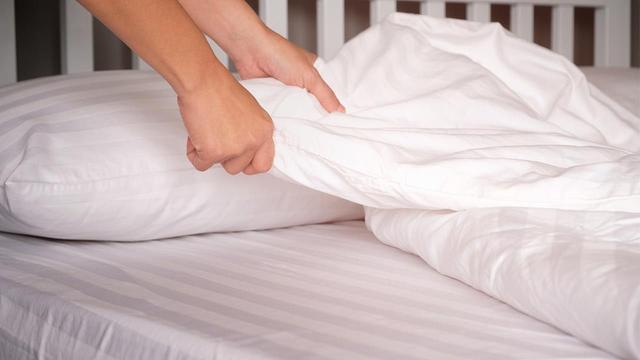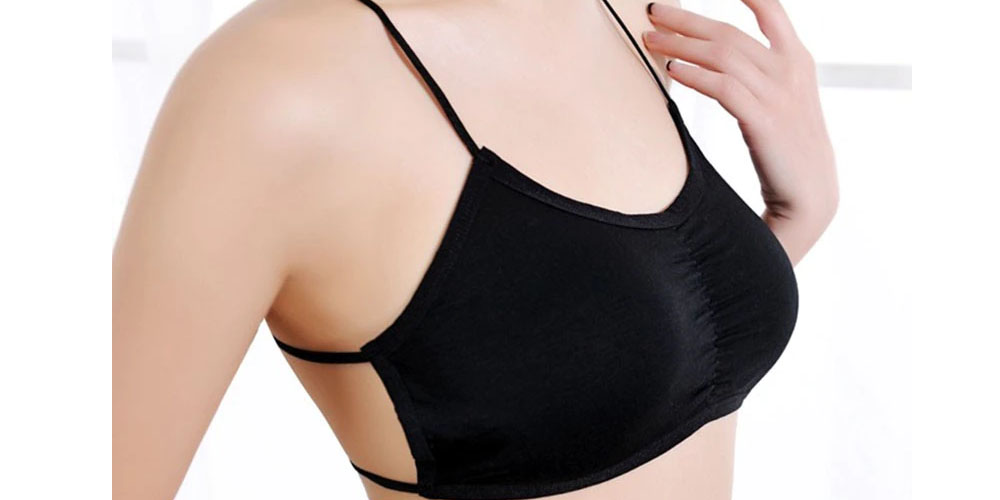Sheets in summer, every how many days is it convenient to change them?
Sleeping in summer is a real challenge for some people. The main reason -although not the only one- is high temperatures. One way to alleviate the sensation of heat during torrid nights is to use the most appropriate sheets according to each region.
The 8 most frequent health problems in summer (and how to treat them)
How often do you have to change those sheets? Does the season of the year influence the frequency with which they should be washed? The answer to this last question is yes, for a logical reason: when it's hot we sweat more, and sweat stains the clothes that come into contact with our body.
We often don't have it in mind, but everyone is in contact with bedding for a third of their time. A study by British scientists mentions that an adult person, while sleeping, can produce up to 100 liters of sweat each year. This makes the litter, according to the paper, an "ideal medium for mushroom cultivation."
Body waste and other substances that soil the sheets
Such contamination does not come from sweat alone, of course. Many other residues from the body end up on the sheets, such as dead cells, saliva, hair, secretions, traces of urine and other substances.
Also, the amount of bodily waste left in bed is higher if you sleep scantily or naked. This practice is more common in summer but can be maintained throughout the year, as it offers some benefits.

The dirt on the sheets is not limited to body waste: you also have to consider the remains of makeup, creams and other cosmetics, animal hair, bacteria, fungi, pollen, dust and a multitude of other particles that people usually carry -without noticing it- from his daily life to the bed.
To get an idea, one piece of information is enough: it is estimated that in a pillow after six years of use, 10% of its weight corresponds to "detached skin, live mites, dead mites and mite droppings". Two decades ago, John Maunder, an expert at the British Entomological Medical Center, had reached such unpleasant findings.
The study cited above, for its part, found up to 17 different species of fungi in pillows between a year and a half and twenty years old. The work analyzed both feather pillows and synthetic materials.
With pillows and their covers there is the aggravating factor that they are in direct contact with the face, putting delicate parts such as the eyes, mouth, nose and ears at risk. If you take into account that, in general, we are increasingly allergic, and that pollen and environmental pollution are two key factors in this regard, the hygiene of bedding becomes essential.
And that's not the only thing. Improper hygiene in sheets and bedding can cause skin irritation, eczema and other problems, which at first can cause discomfort for a healthy sleep and, over time, lead to greater inconvenience.
Recommended frequency to change the sheets
So let's go back to the initial question: how often should the sheets be changed? In general, once a week is a good frequency, Philip Tierno, a microbiologist and pathologist at New York University School of Medicine, explains in an article.
But in summer, for all that has been explained so far, the recommendation is that the frequency be greater, and that the sheets be changed every three or four days. Or even more frequently, in the case of people who sweat a lot or in regions with high humidity, since the latter favors the proliferation of microorganisms.
This washing, in addition, should be done with hot water as much as possible, with programs of 40 or 60 ºC, because that way it really acts against mites. In the words of John Maunder, "If you wash clothes with parasites at low temperatures, all you get are cleaner parasites."
Speaking of humidity, you have to make sure that the sheets (and all the clothes, really) are completely dry before returning them to the closet. Keeping them moist is also doing dust mites and other microbes a favor.
Another way to reduce the presence of these beings is, curiously, to leave the bed unmade, as confirmed by a study by Kingston University in the United Kingdom. This is because the conditions on the "inside" of the bed - that is, the space between the bottom sheets and the countertops - are the ones that help these pests the most: warmer, moister and darker.
If the sheets and blankets are messy, that "interior" space will be smaller. Of course, airing the rooms - cross ventilation is not only effective against covid - and access to natural light are also key to bed hygiene.
Clean the mattress, also key
Otherwise, the parasites stay and leave their dirt not only on the sheets and pillows, but also on the mattress. For this reason, its cleaning also becomes essential (in addition to the fact that, according to the National Sleep Foundation of the United States, the mattress should be replaced every six or eight years).
Mattress cleaning consists of a few essential steps. The first consists of vacuuming -as if it were a carpet- to remove the largest number of microorganisms and dirt particles. Later, if stains of sweat, blood, etc. are detected, they must be cleaned with soap and cold water.
Finally, it is advisable to apply baking soda on the entire surface of the mattress, so that this substance absorbs moisture and neutralizes the smell. And, after about eight hours, vacuum again, to remove the bicarbonate.
This mattress cleaning is recommended every six months, unless a major stain occurs. In that case, it is advisable to act on it before it dries too much, to prevent it from impregnating the fabrics and making it much more difficult, or impossible, to remove.
If you don't want to miss any of our articles, subscribe to our newsletters




